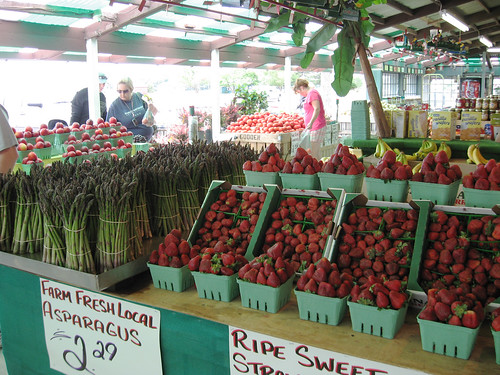
Farmers Market Month may be over, but USDA’s commitment to promoting the use of farmers markets continues. Farmers markets are important for a number of reasons but, in particular, they’ve been an integral part of our efforts to bring nutritious foods to Americans who participate in programs like the Supplemental Nutrition Assistance Program (SNAP) and the Women, Infants and Children (WIC) Farmers Market Nutrition Program. Since the number of markets accepting nutrition assistance benefits has increased, we think it’s a great time to look at how effective farmers markets have been when it comes to increasing low income household access to nutritious foods.
For this reason, USDA’s Food and Nutrition Service (with some valuable help from the Agricultural Marketing Service) is working to conduct studies regarding SNAP participation in the three major parts of the farmers market industry: the markets themselves, SNAP clients who shop at farmers markets, and non-profit organizations that support markets.
The first of the studies, the Farmers Market Managers Survey, focuses on how FNS’ commitment to bringing healthy foods to underserved communities can be aided by bringing farmers directly in contact with SNAP clients. Farmers market managers and direct marketing farmers are a vital connection in a chain that brings quality fresh fruits and vegetables from the fields to nutrition assistance clients. They are the ones who arrange times and places for people to receive the benefits of local agriculture. In addition, they are often the individuals who make decisions about which FNS programs in which they or their markets will participate.
This study will enter the field in early January 2012. It will ask the onsite managers of farmers markets about the characteristics of the markets they run, whether they accept SNAP EBT benefits, and what they think of the process for becoming SNAP approved. The final report is expected in the fall of 2012.
The second study, the Farmers Market Client Survey, is still in the early stages of development. Its goal is to determine why some SNAP clients shop at farmers markets, while clients with similar access do not. Data collection is anticipated in late summer of 2012, with a final report expected in the spring of the next year.
The third and final study, the Farmers Market Incentive Provider Study, is also still being developed. Presently, a number of non-profit organizations are providing financial incentives for SNAP clients to shop at farmers markets in order to obtain more nutritious foods. The goal of this study will be to understand how these organizations operate and make decisions about what markets they should support with their funds. Data collection for this study will begin in the fall of 2012 with the final report expected in the summer of 2013.
Since the second and third studies are still being developed, FNS is accepting feedback on the study plans. If you’d like to provide suggestions to our researchers, please contact the Office of Research and Analysis at SNAP-FMstudies@fns.usda.gov. For more information on the surveys, click here.
